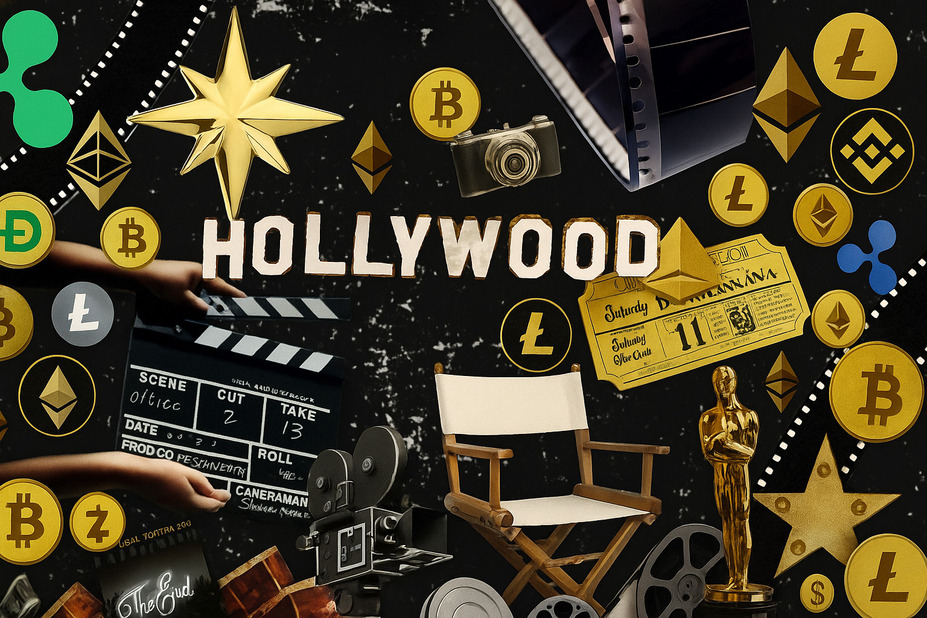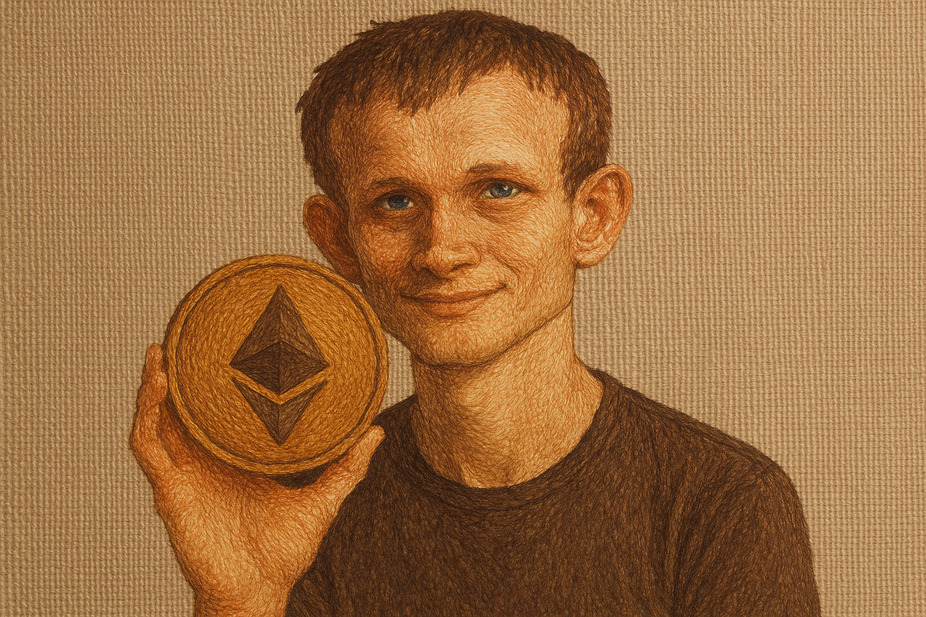Lights, camera, crypto: Can blockchain democratize filmmaking?

Description
The movie industry, for all its glitz and glamour, operates on a complex web of financing, opaque revenue streams, and a whole lot of middlemen. It’s a system ripe for disruption, and cryptocurrency is stepping into the spotlight with some potentially game-changing solutions for funding, distribution, royalties, and connecting with audiences. But this isn’t a simple Hollywood ending. With volatile prices and an industry not always keen on change, will blockchain revolutionize filmmaking, or just play a supporting role?
This article dives into how cryptocurrency is shaking up film financing, distribution, and the very relationship between filmmakers and their fans. We’ll explore what this means for everyone involved – from big studios to indie creators, investors to the viewers munching popcorn in the audience.
Breaking the bank: crypto as a film finance game changer
For years, getting a movie made meant navigating a labyrinth of studio deals, production company partnerships, and chasing down private equity. This system has been tough to crack, especially for indie filmmakers without those crucial industry connections. Now, cryptocurrency is offering some seriously innovative ways to bypass the traditional gatekeepers.
- Tokenized film financing: Imagine slicing up a film project into tiny investment pieces, like shares in a company. Blockchain makes this possible, allowing filmmakers to raise funds directly from a global pool of investors, instead of relying on a handful of big players. Think of it as crowdfunding on steroids. Some early examples include “Braid” (which raised $1.7 million through an ICO) and even “The Irishman” (though not fully tokenized). This model opens up film investment to more people, lowers the barrier to entry, and can create liquidity for investments that are usually locked up for years. Investors can receive perks like a share of the profits, access to premieres, or exclusive merchandise.
- DAOs take the director’s chair: Decentralized Autonomous Organizations (DAOs) are a radical concept – imagine a film studio run by its investors! DAOs like FF DAO and Decentralized Pictures allow token holders to vote on which projects get funded. This shifts control away from studio execs and wealthy investors, and puts it in the hands of potentially thousands of individuals. It’s a way to promote diverse stories by bypassing industry biases and giving a platform to underrepresented filmmakers and narratives.
Cutting out the middleman: distribution and rights management on the blockchain
The traditional film distribution model is notorious for its layers of intermediaries, who often take a hefty cut of the revenue. Blockchain offers the promise of a more direct, transparent, and efficient system.
- Direct-to-audience platforms: Blockchain platforms like Moviebloc and Filmio are creating decentralized alternatives to traditional film distribution. They use smart contracts to automatically pay royalties, instantly distributing funds to rights holders when viewers pay for content. This cuts down on the industry’s infamous payment delays. These platforms also provide filmmakers with valuable data about their audience – demographics, viewing habits, revenue – information that distributors usually keep close to the vest.
- NFTs: new life for film IP: Non-fungible tokens (NFTs) are opening up exciting possibilities for managing film intellectual property. Directors and production companies are using them to monetize everything from concept art and scripts to behind-the-scenes footage. Kevin Smith’s “Killroy Was Here” broke ground by being released as an NFT, granting the owner exclusive rights. NFTs can also simplify rights management by creating a permanent, unchangeable record of ownership on the blockchain. This makes licensing easier, reduces disputes, and streamlines international rights transfers.
Beyond the big screen: engaging audiences in new ways
Cryptocurrency is changing the way films connect with their audiences, creating new models of engagement that go far beyond just watching a movie.
- Tokenized rewards and community building: Platforms like Mogul Productions and Filmio use token-based reward systems to incentivize audience participation. Users earn tokens for providing feedback or promoting films, and these tokens give them governance rights within the platforms. This turns viewers into stakeholders, with a financial interest in the film’s success. It strengthens the bond between filmmakers and their fans, and could revolutionize marketing by turning enthusiastic fans into genuine advocates.
- Metaverse movie nights: Imagine attending a film premiere in a virtual world! Metaverse platforms like Decentraland and The Sandbox are now hosting film premieres and festivals, creating immersive experiences that transcend geographical boundaries. These events use cryptocurrency for tickets, merchandise, and exclusive experiences. Filmmakers can build interactive environments around their content, offering additional content and direct interaction with their audience. These enhanced experiences can be tokenized and monetized, opening up new revenue streams beyond traditional ticket sales.
The roadblocks ahead: challenges and limitations
Despite its potential, cryptocurrency faces some significant hurdles before it can truly transform the film industry.
- Regulatory maze: The rules surrounding cryptocurrency are still evolving around the world, creating uncertainty for filmmakers. Tokenized film financing, in particular, can be tricky, as many token offerings may be classified as securities. Projects must navigate complex legal requirements that vary from country to country, often requiring expensive legal advice.
- Tech troubles: Let’s face it, cryptocurrency can be confusing for the average person. Complex wallet setups, security concerns, and a general unfamiliarity with blockchain technology create friction that limits adoption. For cryptocurrency to truly take off in the film industry, these technical barriers must be lowered through better user experiences and more education.
- Volatility blues: The wild price swings of many cryptocurrencies can make financial planning a nightmare for film projects. Budgeting becomes much more difficult when funding is raised in volatile digital assets. Filmmakers need to find ways to mitigate these risks, perhaps by converting funds to stablecoins (cryptocurrencies pegged to traditional currencies) or immediately exchanging them for fiat currency.
- Industry pushback: The established players in the film industry aren’t always eager to embrace change. Major studios, distributors, and streaming platforms benefit from the existing power structure and may see decentralized alternatives as a threat. This resistance could manifest in exclusive contracts, talent retention strategies, or lobbying for regulations that stifle innovation.
The big picture: Evolution or revolution?
As cryptocurrency matures, its impact on filmmaking will likely unfold in stages.
- Near-term integration: In the short term, expect to see studios experiment with NFTs for marketing, and indie filmmakers using tokenized financing for projects that struggle to find traditional funding. These are more like tweaks to the existing system than a complete overhaul.
- Mid-term hybrid models: As technology becomes easier to use and regulations become clearer, we’ll likely see hybrid models that blend traditional and crypto approaches. Studios might launch their own tokens for audience engagement while sticking with traditional distribution. Indie films might use blockchain for financing and rights management, while still aiming for film festivals and theatrical releases.
- Long-term structural change: The most profound changes could come in the long run, as cryptocurrency infrastructure matures. We might see the emergence of fully decentralized studios, where all aspects of production, distribution, and monetization happen on the blockchain, governed by DAOs with participants from all over the world.
Conclusion
Cryptocurrency offers some truly revolutionary solutions for the film industry. Through blockchain technology, it can enable tokenized financing, streamline distribution, automate rights management, and create deeper connections with audiences. These innovations have the potential to cut out the middlemen and democratize both investment and creative decision-making.
However, it also faces real challenges – regulatory uncertainty, technical hurdles, market volatility, and resistance from the established industry. The future will likely be a blend of traditional and blockchain approaches, rather than a complete disruption. The key to success will be thoughtful implementation that delivers real value to all stakeholders, while opening up new opportunities for diverse voices and stories to be told.












